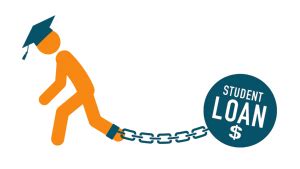There has never been more disruption to the student loan market than during COVID. From loan forgiveness, to loan forbearance, to load modifications, to new loan service providers, to modified payoff schedules, the options and choices seem endless. It’s tough to navigate these waters especially with all of the other ways the pandy has affected your life (in person classes? Remote classes? Masks? vaccines?). In this blog we’ll try to give you a high-level overview of what’s happening and what you can do to best manage the situation based on your individual circumstances.

Some Background
In 2019, we talked about important things to know about your student loans. These still hold true: you still need to understand the rate and terms of your loan, your repayment options, relief options, and avoid debt relief scams. Check our 2019 post to familiarize yourself with these important facts about your loans, as it’s only gotten more complicated and these principles apply now more than ever.
The biggest change in the last year has been the federal loan forbearance program. The important thing to remember here is that forbearance is not forgiveness; forbearance temporarily pauses your payments, but the debt is still there and possibly increasing. Forgiveness means the loan is forgiven, and you don’t have to pay it back (although you might owe taxes on the loan amount since it could be treated as income).
What Now?
Since March 2020, payments for most student loans have been paused under the forbearance program. The so-called “administrative forbearance” offered by the Education Department is scheduled to end on September 30, 2021. There is pressure to extend this date, as one of the government’s largest student loan services won’t be renewing its contract so a huge amount of loans will have to be transferred to a new loan servicer at the same time as the forbearance program is ending. Regardless, it’s a good idea to plan on resuming payments in October by making sure your contact info is updated with your loan servicer and on your StudentAid.gov profile. Find out what your payment will be, and if you don’t think you can afford it then consider an income-driven payment plan which bases your payments on how much money you make.
Even if forbearance is extended, it’s a good idea to plan on resuming payments because even while you are in forbearance your loan debt could increase as interest is added to your outstanding balance; this could cause future payments to be even higher. Student loans also follow you forever, as they can’t be discharged in bankruptcy court unlike most other debts. So you want to make sure that you have your student loan payments under control.
There has also been talk about student loan forgiveness / cancellation of all student loan debt (currently $1.7 trillion and counting) and / or up to $10,000 per student. This is all still talk and has very little chance of passing, so don’t base your plans on your debt being forgiven.
The important thing to do is act now. If you wait until late September when 30 million student loans suddenly come due, the call centers will be crushed and you might not have time to get your loan sorted before payments come due.


